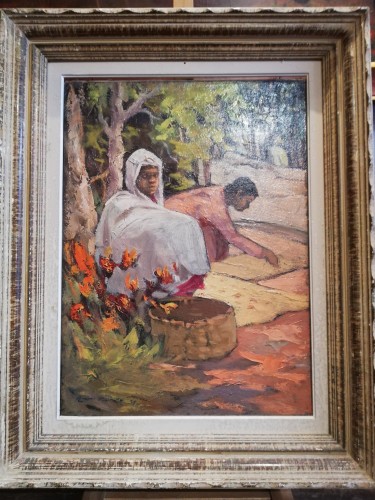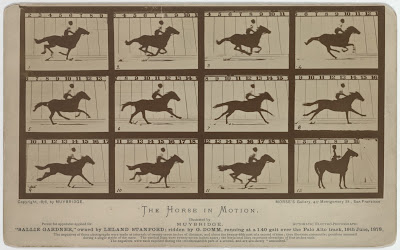Art in Madagascar in the 20th Century
Introduction
The country of Madagascar is an island that lies off of the southeastern side of Africa. Art is not typically what comes to mind when thinking of Madagascar. The main art styles found there are those of traditional art, such as weaving from natural materials. Fine art has become more prominent and is continuing to grow today. In this blog, I will explore different Madagascar artworks made from the late 1800s and early 1900s.
Emile Ralambo (1879-1963)
Emile Ralambo was a painter from Madagascar who mainly focused on portraits of the Malagasy people along with the beautiful scenery around them. There is very limited information about this artist, but I feel the artwork speaks for itself in terms of passion and beauty.
This watercolor painting was made in 1926 in Madagascar. I was not able to find a title, but I think this art piece is beautiful, and I chose it because the woman emanates beauty and confidence, something I think every woman should feel. Emile does a wonderful job in this painting of showing very traditional wear for Madagascan women. The painting is of a Madagascan woman, who is wearing a traditional plaited-reed dress, which was very common for women of age. Female hairstyles are a big part of the Madagascan culture, as each woman wears her hair how she wants, and this woman has a beautifully done hairstyle. Her jewelry is also very traditional, these in particular are called coin necklaces.
What initially drew me to this art piece is the color. The blue in the dress and the hint of blue in the woman's eye contrast the rest of the painting beautifully. He also fills the entire paper with his art, which is a great use of spacing. Lastly, the texture causes the painting to look grainy on the edges but more clear as you look at the subject, which is a great way to emphasize the woman's beauty.
Joseph Ramanankamonjy (1898-1984)
Joseph Ramanankamonjy was a locally known artist in Anjohy, Madagascar. His art subjects were drawn from his love of his home, including landscapes, everyday life, and portraits. He became known for his paintings on silk, which he spent most of his career perfecting.
Jeune Fille Hova was made in 1930 by Joseph in his studio in Anjohy. Its medium is sanguine on silk. This portrait is very important for a few reasons. Joseph painted this woman very deliberately, focusing on her head, hair, earrings, and face while letting the rest of her body blur out of the frame. She was meant to be depicted as a Hova, one of the three historical castes in Madagascar's Merina Kingdom. They belong to the Malagasy clan, the largest Madagascan ethnic group. As said before, Joseph's subjects were always connected to his Madagascan homeland.
I love this art piece because it is simple yet beautiful. This simplistic beauty is what draws me in and makes me want to meet the subject. She looks strong, calm, and kind. The use of sanguine adds a beautiful contrast to the creamy white background, and the lines tracing her clothing and hair embellish the simplicity of the piece. Each line seems to know exactly where it's going, adding to the woman's confidence exuding off the page. Not a hair is out of place. Lastly, the marks across the center page add a beautiful texture, implying there is more going on than just a beautiful portrait being made. To me, it feels as though she is looking at something or waiting for something to happen. The focus radiating out of her eyes makes me want to keep looking at this artwork.
Georges Razana Maniraka (1900-1943)
Georges Razana Maniraka was a Madagascan painter, known mostly for his series of portraits of the kings and queens of Madagascar shown in the Colonial Exhibition of Paris. Other than this, Georges is not well-known and there is very limited information about him or his art career.
Georges created this oil painting on canvas in 1939 in Madagascar. Titled Drying of Rice, it is meant to depict the traditional rice drying technique used in Madagascar. Rice is a very important food for the Madagascan people, culturally and sustainably, rice is a primary food source and is used in many traditional meals. In Madagascar, women and children are tasked with drying the rice and pounding it to prepare it for meals. This image depicts the previous.
As compared to the artwork above, the lines in this painting are very blurred. Although shapes are clear, like a tree, rice field, and woman's body, the blurred lines add another element to the art piece altogether. The work done to prepare the rice is gruesome, being out in the heat all day, drying the rice, and then using a lot of strength to pound the rice is no easy task. To me, the unfocused nature of this piece is telling the audience, "This isn't easy." The colors are beautiful, encompassing the beauty found in Madagascar, and letting the audience know Georges loves his country. Overall, I really like this piece.
Sources
“Emile Ralambo (1879-1963) Madagascar – Malgache.” BolezArt, Emile Ralambo. Accessed 1 Aug. 2023.
Faigle, Markus. “Rice Is Vitally Important to Madagascar, Culturally and as Its Primary, Most Important Food People like to Eat (See the ‘Food’ Button above in the Header).” Zahana.Org: Rice and Its Cultural Importance for Madagascar, Rice. Accessed 1 Aug. 2023.
Gifts & Blessings || Historical Textile Arts, Historical Textile Arts. Accessed 1 Aug. 2023.
“Hova (Madagascar).” DBpedia, Hova. Accessed 1 Aug. 2023.
“Madagascar.” Encyclopædia Britannica, Madagascar. Accessed 1 Aug. 2023.
Proantic.com. “H/T Malagasy by Georges Razana Maniraka (1900-1943).” Proantic, Georges Razana Maniraka. Accessed 1 Aug. 2023.
“Ramanankamonjy.” Robert Simon Fine Art, Ramanankamonjy. Accessed 1 Aug. 2023.
Unknown. “Group of Women and Children with Different Hairstyles, Madagascar, ca. 1913.” Calisphere, Madagascan Hairstyles. Accessed 1 Aug. 2023.




Thank you for sharing such an original subject. I had no clue about art in Madagascar and it was interesting to learn more about it. The piece from Emile Ralambo stood out for me. The colors are vibrant and beautiful and the portrait and the details of the women's face and body are really well presented.
ReplyDelete